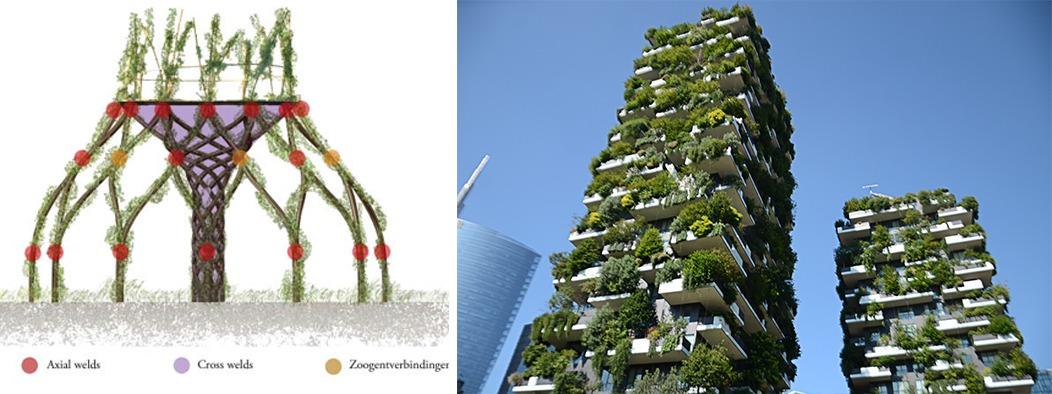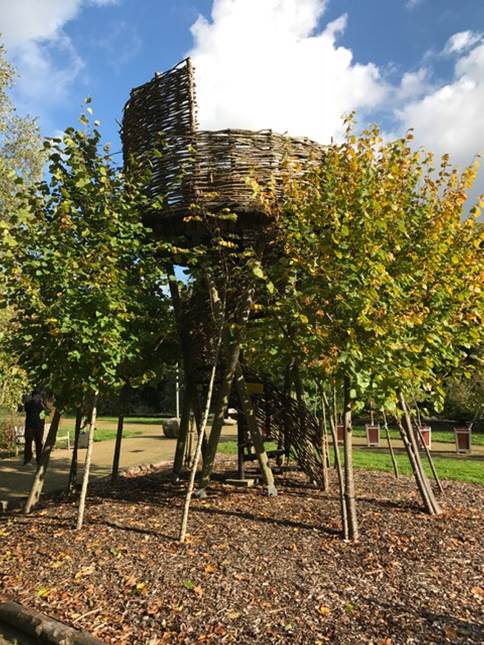Vertical forest engineering
Engineered wood products are not always necessary to create new buildings and nicely designed structures: it has to be considered that also after the most advanced sawmill processes, trees are the starting point and basic material of biobased structures.
Therefore, why cannot we use directly trees as structural elements? In the end, they can be forced to grow in different patterns and shapes, and combined by using their capacity to naturally adapt to the external actions (like wind) surrounding them. This natural resiliency can be taken into account when forming and shaping trees, in order to perform certain functions. At the same time, natural joints and nodes have to be studied and realized to combine trees among each other.
Of course, when a structure is composed of trees it is necessary to wait for a sufficient growth of them: this means that both reliability and performance of such a structure increase with time.
Our group is involved in the design and the creation of a self-growing pavilion, realized in the Botanical Garden of Delft University of Technology (video). The platform is temporarily supported by columns until the trees have grown sufficiently and are able to support it by themselves.
In this structure, a crucial role is played by its growth monitoring: this is performed by visual inspections, stiffness testing and terrestrial laser scanning, in order to quantify diameter growth, location and sizes of nodes and connections, and also the 3D configuration of the trees.
Further applications of this concept are rapidly developing, making trees also an important part of buildings in combination with other structural elements and materials, like in the vertical forest skyscrapers, for which a PhD project is ongoing.

Contact



